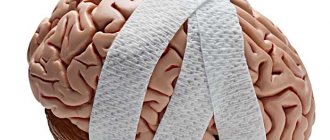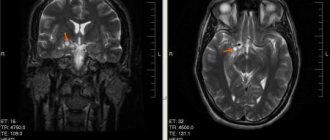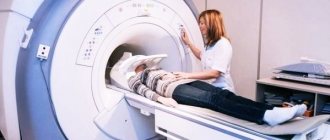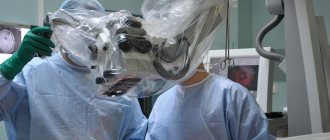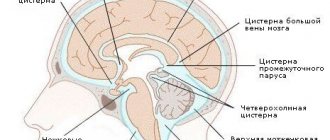Many patients are interested in what it is - grade 3 dyscirculatory encephalopathy - and whether it is possible to live a long time with this disease. The pathology is a complex of neurological disorders that occur against the background of deterioration of cerebral circulation. A patient with grade 3 DEP constantly needs help from outsiders. The chances of recovery are extremely low.
Disease severity
Depending on the clinical manifestations, it is customary to distinguish three degrees of severity of this disease:
- 1st degree. In the initial stage of the disease, subjective sensations appear. The patient notes decreased performance, mood swings, sleep disturbances, decreased memory, and increased fatigue. In most cases, there are no objective signs.
- 2nd degree . It is characterized by more obvious manifestations of the disease. Neurological disorders are noted. Upon examination, a neurologist can detect deviations from the norm in the psychological and emotional sphere.
- 3rd degree . The last stage of DEP is characterized by serious neurological changes. The patient's mental state becomes unstable, there may be attacks of aggression, and coordination is impaired. In some patients, the functions of the visual and sensory systems are impaired. Mental abnormalities, lethargy, and periodic fainting are observed.
Symptoms of DEP grade 3
At the third stage, all symptoms worsen and new ones are added. If at first the deviations in the functioning of the nervous system are insignificant, then gradually they reach their apogee. The patient ceases to be aware of his condition and does not criticize actions. Grade 3 is characterized by an aggressive behavior. A person’s intellect is impaired, persistent dementia develops, i.e. dementia. The patient is able to work for some time.
- severe dementia;
- urinary incontinence;
- movement disorder;
- speech disorders.
How does dementia manifest? This is a dysfunction of the intellect, in which the ability to comprehend the connection between events and phenomena surrounding a person is reduced. Cognition processes become worse, emotional reactions and character traits become poorer, some of them disappear. The patient ceases to distinguish between the important and the unimportant. A person does not notice such problems; they greatly affect relatives. In severe cases of dementia, a person loses speech skills and becomes incapacitated.
Usually the patient is given a disability. The most unfavorable course is observed against the background of diabetes mellitus. With grade 3 DEP, complications arise that further aggravate the situation.
Features of stage 3
The development of vascular dementia is observed. All symptoms progress and become more pronounced.
Seizures similar to epileptic ones appear, and intelligence decreases.
A person becomes unable to care for himself; he requires constant attention and care. His fate depends entirely on those around him.
Urinary incontinence is observed, walking is impaired, and dementia develops. The patient loses the ability to learn new skills.
Ultimately, grade 3 dyscirculatory encephalopathy ends in disability, and in especially severe cases, death.
The transition from mild to severe forms can sometimes exceed 5 years, but there are cases when the stages of DEP change rapidly, in less than 2 years.
Development mechanism, differences from the initial stage
Dyscirculatory encephalopathy (abbreviated as DEP) in general is the closest “relative” of stroke, apart from transient ischemic attack.
The process is characterized by identical phenomena with the only difference being that the deviation in nutrition is not rapid and does not occur at one moment.
Encephalopathy increases and forms gradually, gradually. Sometimes for decades, until it reaches a certain phase and provokes disruption of the cerebral structures.
The basis of the mechanism, as the name suggests, is a weakening of cerebral circulation (“dyscirculatory” - an indication of degenerative processes).
Why it occurs is an individual question. The main factor is atherosclerosis.
That is, narrowing of the arteries due to the deposition of lipid compounds and cholesterol. Or spasm, pathological tension of the smooth muscles of the vessel.
Regardless of the reason, the essence remains the same: the lumen of the artery decreases, pressure increases, nutrition and oxygen supply weakens.
Another possibility is congenital abnormalities in the formation of blood supply structures, but this is a relatively rare occurrence.
There are also factors such as tumors, vascular problems, malformations, and aneurysms. There are many options.
One way or another, the result is always identical. Disruption of cerebral blood flow is first accompanied by compensation of the condition due to an increase in pressure and an increase in heart rate.
This is the first stage. Formally, the nutritional intensity is still normal. And then the body stops coping properly. First, the disease “evolves” to stage 2, and then passes into the terminal, 3rd, completely decompensated phase.
Starting from the second stage, structural changes in the brain are detected: expansion of the ventricles and others.
In the future, it is quite possible to develop an acute disturbance of cerebral blood flow - a stroke. Even if it is not present, neurological dysfunctions gradually but inexorably increase and the rate of formation of deficits increases as the disorder progresses.
At the second stage, the effectiveness of recovery decreases, and a complete cure cannot be achieved. However, there are still chances to compensate for the condition with medication.
How does the first stage of dyscirculatory encephalopathy differ from the second?
The late stage is characterized by a number of specific features:
- More pronounced clinical picture. The intensity of symptoms is higher, and so is their duration. Additional signs are present.
- General severity of the patient's condition. Well-being interferes with the implementation of professional skills. But capacity is still retained.
- The presence of pronounced structural changes.
- The prospects for a full recovery are dim. There is no longer any possibility of a cure, as was said. At the first stage there is every chance to eliminate the violation.
For obvious reasons, the forecasts also differ.
The second stage of the disease is characterized by visible mental disorders, behind which there is a disruption of brain function. Patients experience frequent attacks of hypochondria and depression. From the outside it seems that the patient’s character is deteriorating. The sick person tries to adapt and shift the blame to others. Characteristic manifestations:
- Attention disturbance.
- Significant memory impairment.
- Violation of self-control.
- Pseudobulbar syndrome is difficulty swallowing food.
- Irritability, frequent mood swings.
- Depressive states.
The disease implies the presence of disability, but the patient is still able to care for himself. Based on the above symptoms, of course, a diagnosis is not made: grade 3 dyscirculatory encephalopathy. How long you can live, they won’t answer you either. Disturbances at this stage may coincide with other vascular diseases. In any case, it is necessary to identify their cause. A comprehensive examination using modern technologies is necessary.
What are the causes of the disease?
Discirculatory encephalopathy develops due to the pathology of the capillaries, as a result of which they cannot fully supply the brain matter with nutrients and oxygen.
This happens for the following reasons:
- Hypertension causes damage to the integrity of blood vessels. They overlap and burst, causing brain matter to absorb plasma or blood. Harmful substances can also enter when the walls of blood vessels lose elasticity.
- Hypotension . The capillaries are weakly filled with blood, it slowly flows through them.
- In atherosclerosis, cholesterol plaques clog blood vessels. Due to improper metabolism, fats accumulate on the walls, gradually the lumen decreases and is completely blocked. Under such conditions, blood does not reach all parts of the brain.
- Osteochondrosis of one of the spine sections. With this pathology, the brain receives less blood than it should due to compression by spasmed muscles and bone processes of the vertebral artery.
- Impaired blood circulation can be caused by increased blood viscosity, which causes platelets to stick together and form clots or thrombi. They block the vessel, and the part of the brain that it supplied gradually dies.
- Nicotine addiction leads to a decrease in the lumen of capillaries, this is especially pronounced in the brain. With prolonged smoking, this condition becomes irreversible.
- Pathology of blood vessels and blood reduces the speed of movement of the latter throughout the body. Such diseases include thrombophlebitis and vegetative-vascular dystonia.
- Disturbances in the functioning of blood vessels are observed with congenital anomalies (pathological development of veins and arteries, angiodysplasia).
- Hematomas formed due to injuries to the brain or spine. They put pressure on the capillaries, compress them, and impair the access of oxygen and nutrients to the nerve cells.
- Hormonal imbalance . Endocrine glands produce hormones that regulate the state of the lumens of blood vessels in the brain. With their pathology, the production of hormones is disrupted. A hormonal imbalance often causes the development of dyscirculatory encephalopathy in women during menopause.
The transition of the disease to stage 3 is facilitated by stress, emotional stress, smoking, alcoholism, and osteochondrosis of the cervical spine.
You can study what autonomic dysfunction is and how it manifests itself in our article.
Inability to coordinate movements, spinocerebellar ataxia - features of symptoms and treatment of the disorder.
Causes of dyscirculatory encephalopathy
The occurrence of progressive cerebrovascular accidents is most often associated with the following reasons:
- Atherosclerosis.
- Hypertension.
- Pathological changes in veins.
- Vasculitis.
- Blood diseases.
- Neurocirculatory dystonia.
Doctors often fail to identify one cause, and then they talk about dyscirculatory encephalopathy of mixed origin. Doctors can influence some of these etiological factors with the help of medications, for example, to stabilize blood pressure, reduce inflammatory changes in blood vessels, normalize blood clotting, etc. If the patient has severe atherosclerosis of large and small vessels of the brain, it is much more difficult to restore cerebral circulation.
How does the disease manifest itself?
Stage 3 DEP is characterized by serious impairment of vital functions.
The patient experiences severe headaches, tinnitus, disturbed sleep, sudden mood swings, increased fatigue, and a significant decrease in performance.
Such changes occur due to damage to the subcortex of the brain, where information centers are located. They control sleep and are responsible for the functioning of the body’s sensory systems (hearing, vision).
When the integrity of the capillaries is disrupted, a microstroke develops. As a result, the mental center suffers.
It becomes difficult for the patient to focus on specific things, memory decreases, and it is difficult for him to imagine the final result of his actions.
If the medulla of the frontal lobe is affected, emotional instability, depression, indifference, attacks of aggression, hysterics, and apathy are noted.
The process of transmitting information from nerve cells to organs is disrupted.
It becomes difficult for the patient to coordinate movements, walking changes, it becomes unsteady. On examination, the tendons and muscles are in spasm.
The patient loses the ability to perform the simplest tasks of self-care.
He needs care, the constant presence of a person who will help him.
When the occipital lobe is damaged, vision is affected. Sometimes symptoms of oral automatism are observed: a nasal voice, opening of the mouth when some part of the body is irritated, difficulty swallowing.
Preventive measures
Doctors have developed 3 types of preventive measures to avoid disability due to cerebral encephalopathy.
Primary measures . They provide for taking into account the initial risk factors for the appearance of vascular diseases, and the correct treatment of patients with NPCI (initial manifestations of cerebrovascular insufficiency). Completion of disease therapy.
Secondary level . Detection of early pathology and treatment of cerebral encephalopathy, especially at an early stage. Elimination of causes that provoke the development of the disease. Quarterly clinical examination to examine and monitor the patient’s health status. For patients who have suffered a stroke, complete rehabilitation.
Tertiary prevention measures . Timely examination for group 3 and appropriate employment. Carrying out other measures for the purpose of social protection of the patient.
To reduce the risk of disease, you should avoid head injuries and various types of poisoning - alcohol, toxic substances, infectious.
Encephalopathy is a consequential disease. It occurs against the background of disruption of trophic processes in the brain, which is associated with oxygen starvation or circulatory disorders. Even chronic or periodic nutritional deficiency can lead to the development of diffuse brain dystrophy.
Most patients ignore or do not notice the first symptoms of the disease, so the diagnosis is made either at the second stage of the process, or by chance during a routine medical examination.
When the clinical picture of the disease unfolds in full force, patients and their relatives begin to be interested in the question: is encephalopathy a disability? The thing is that the general condition of the body usually worsens, the progress of the disease becomes obvious, and this deprives the patient of his former opportunities and normal life activities.
Treatment approach
The goal of therapeutic measures is to treat the underlying pathology, eliminate lesions and restore brain function, protecting it from oxygen starvation.
Treatment of grade 3 dyscirculatory encephalopathy is complex.
To eliminate the pathology and restore the condition of the brain cells, you need to strictly follow all the recommendations.
A diet with limited salt and fat is prescribed. The use of vitamins is mandatory.
It is important to engage in psychotherapy.
The patient will recover more easily if he is occupied with certain tasks that he can perform. This approach will help him realize that there is a chance for recovery.
Drug treatment
Several drugs are prescribed at once to ensure normal blood flow, restore nerve cells and eliminate the cause.
The following drugs are used:
- Lisinopril is a drug to lower blood pressure if hypertension has led to the development of DEP.
- Acetylsalicylic acid (aspirin) – thins the blood, prevents platelets from sticking together and blocking blood vessels.
- Curantil - helps to increase the lumen of capillaries, strengthens their walls.
- Nimodipine - blocks the supply of calcium to the muscles, which leads to their relaxation and improved blood flow. As a result, movements improve and the ability to think sensibly is restored.
- Atenolol - removes excess fluid from the body, normalizes heart function, increases blood flow, reduces heart rate and blood pressure.
- Vasobral - protects brain cells from oxygen starvation, prevents the formation of blood clots, improves metabolic processes in the subcortex, and restores functions.
- Ginseng tincture is a natural remedy. It helps increase productivity, improves brain function, cardiovascular system, reduces the amount of cholesterol in the blood, and fights increased fatigue. However, the use of ginseng tincture for hypertension is contraindicated.
Physiotherapeutic methods are also used in the treatment of grade 3 DEP: electric sleep, massage, galvanotherapy, baths, laser and UHF therapy.
Surgery
This method is used if drug treatment does not give the desired results. Surgery is performed on the great vessels.
How to treat DEP at stage 2
Considering that the development of vascular encephalopathy of the brain is the result of a chronic circulatory disorder, its treatment should be aimed at restoring blood circulation in the brain tissue, increasing the resistance of cells to hypoxia and compensating for the root cause of the disease.
Medicines
Drug treatment of DEP can be etiotropic and pathogenetic. Etiotropic therapy is aimed at eliminating or compensating for the underlying disease. It may include the following drugs:
- hypolipidemic;
- hypoglycemic;
- hypotensive
Pathogenetic therapy includes drugs for the treatment of secondary pathology - DEP. It can be cured or slowed down with the following drugs:
- calcium channel blockers;
- alpha-adrenergic receptor antagonists;
- phosphodiesterase inhibitors;
- antiplatelet agents, etc.
Depending on the severity of the disease, medications may be given as tablets or injections.
Vasodilators
An important component of the course of treatment for dyscirculatory encephalopathy of the brain are cerebral vasodilators. They are designed to dilate cerebral vessels and improve blood supply to ischemic areas.
To compensate for cerebrovascular insufficiency, the following drugs can be used:
- Vasobral;
- Cinnarizine;
- Stugeron;
- Cavinton;
- Sibelium;
- Betaserc;
- Sermion;
- Redergin.
All of these drugs have vasodilating properties or improve metabolism in ischemic areas.
Neuroprotectors increase the resistance of brain cells to oxygen starvation. This group includes the following means:
- Piracetam;
- Phenibut;
- Pantogam;
- B vitamins, etc.
For dyscirculatory encephalopathy of the brain, treatment also includes drugs that improve blood microcirculation.
A narrowing of the lumen of the carotid and vertebral arteries by more than 70% is accompanied by progressive chronic (DEP) and acute (TIA, stroke) pathologies of cerebral circulation, so the patient requires urgent surgery.
Due to the weak effect of drugs on dyscirculatory encephalopathy provoked by stenosis, treatment necessarily includes surgery.
Depending on the severity of stenosis and other indications, the following operations are performed:
- the formation of an additional connection of large cerebral and cervical vessels (anastomosis), which replaces the affected carotid artery;
- restoration of vessel patency (carotid endarterectomy);
- reconstruction of a damaged vertebral artery (for injuries, complications of spinal abnormalities, etc.).
Physiotherapy
In cases of severe DEP, the attending physician may additionally recommend physical therapy. Effective methods include laser therapy, acupuncture, UHF neck area, balneotherapy and electrosleep.
ethnoscience
Traditional medicine methods are effective only at the early stage of encephalopathy and in combination with medications. Infusions of the following plants are used to treat DEP:
- coltsfoot;
- clover;
- hawthorn;
- rose hip;
- Linden;
- oregano;
- horsetail;
- plantain.
Calming herbs can serve as a gentle alternative to drug therapy for insomnia. They may include chamomile flowers, mint and lemon balm leaves, valerian root, motherwort herb, etc.
Therapy is aimed at solving two problems. The first is eliminating the cause. The second is to relieve symptoms and at the same time prevent the progression of the disease. Mostly medication correction is required.
As for the fundamental task of combating the provoking factor, it all depends on the type of disease:
- thrombosis requires the use of anticoagulants and fibrinolytics;
- diabetes - changes in diet and insulin administration;
- atherosclerosis requires the prescription of statins;
- hypertension - a group of medications to lower blood pressure, etc. This is an individual question;
- tumors, aneurysms and malformations can only be eliminated surgically. The scope of intervention varies. Depends on the case.
As for the actual elimination of symptoms and prevention of disease progression, medications of several groups are prescribed:
- Cerebrovascular agents. Normalize blood flow in the brain. Piracetam as the main one. It is also possible to use Cavinton.
- Drugs aimed at relieving ischemia. Actovegin and analogues.
- Nootropic medications. Used to accelerate metabolic processes and protect tissues from destruction. Glycine, Phenibut and others.
- Dizziness is relieved by Tagista, Vestibo and similar medications.
Attention:
These drugs should not be taken for tumors, especially malignant ones. Because they will contribute to the rapid growth of neoplasms: not only nervous tissues, but also abnormal structures begin to eat better.
Or you need to carefully select the names, under the supervision of a specialist, and strictly follow the scheme.
The diagnosis of DEP requires systematic treatment, because the disease is chronic and cannot be completely restored.
It is recommended to take vitamin-mineral complexes and adjust the diet (less salt, more plant products), although nutrition is not critical.
It is necessary to stop smoking, drinking alcohol, caffeine, and it is important to optimize the mechanical load. Strong activity will help normalize cerebral circulation. Therefore, physical education cannot be neglected.
Physiotherapy and massage are possible for vertebral artery syndrome. Electrophoresis. As needed, if it will help achieve treatment goals.
